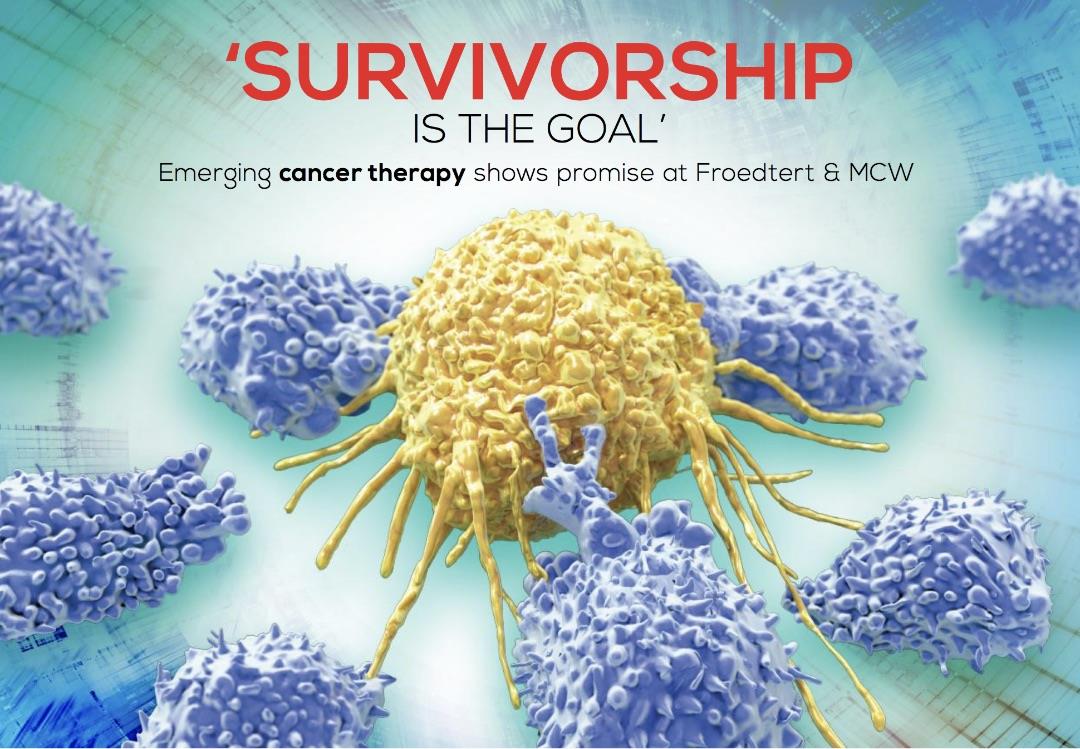
Emerging cancer therapy shows promise at Froedtert & Medical College of Wisconsin
By Lauren Anderson - BizTimes
The symptoms started out as mild stomach issues for Appleton resident Bret Carroll.
But when Carroll, a healthy and active 45-year-old professional pilot, found a lump on his abdomen in 2011, it signaled an enlarged spleen.
“They went through a process of doing CAT scans and blood work,” Carroll said. “They started narrowing a diagnosis down, and they kept eliminating the more benign options.”
Then all options were eliminated but one: mantle cell lymphoma, a rare cancer of the immune system. Carroll reported immediately to his first chemotherapy treatment and was given a prognosis of about two years.
“There was a pamphlet they gave us and it specifically mentioned that mantle cell was incurable,” Carroll said. “So it struck even harder than a diagnosis of cancer.”
A father of three high school students, Carroll considered what he wouldn’t live to see.
“It seemed like there were a lot of things we were going to miss out on that we still wanted to do,” he said. “The thought of not being able to see them graduate, it was very tough.”
Because he was in otherwise good health, doctors advised Carroll to pursue the most aggressive treatments available, with the promise that others would become available over time.
The next few years brought the highs and lows of treatment – the hopes and letdown of chemotherapy, stem cell transplants, radiation therapy and a clinical trial of a new drug that ended up producing extremely negative side effects, including severe weight loss.
With each roadblock, Carroll held out hope for what doctors initially told him – that new treatment options were coming.
“With the ups and downs over the years, it was disappointing to have setbacks, but it wasn’t like the initial shock of being diagnosed,” he said. “Even though the treatments themselves were a hardship, there was something to keep me going.”